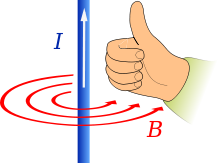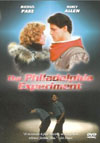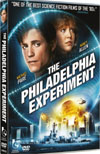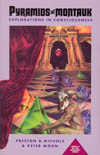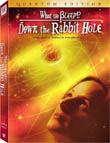
|
The Philadelphia Experiment"We donít see things as they are. We see them as we are."~ Anais Nin (1903-1977), American-French writer
|
|
-Home Page
-Site Map -Contact Page

Articles: -The Maldek Files -Recipe for Health -Political Evolution -Animal Whispering -E=mc2 Page -Philadelphia Experiment -Green Control -Monetary Reform

Resources: -Dr. Stephen Covey -Dr. Bruce Lipton -Powertalk Interviews -Flax Oil Secrets -The Future of Food -Archive Page -What the Bleep Do We Know at Lyratek.com?
Astronomy
-Cosmos -How the Universe Works
Science Fiction
-Sliders -Star Trek -The Matrix 
|

|
Introduction to The Philadelphia ExperimentThis page will almost certainly not be the first or last word on the subject of The Philadelphia Experiment. What it will attempt is to give readers some idea of the scientific basis that supposedly extended into this experiment and beyond into the field of time travel, and examine the philosophical principles that inform the way that we perceive and understand strange phenomena, and that inform our choices in determining what to do in given situations. As ever, human social growth in how we deal with this type of phenomenon is even more important than the technology.What was The Philadelphia Experiment? Basically this was an early stage of the development of modern stealth technology, concerning a wartime effort to make a U.S. Navy ship primarily invisible to radar, secondarily invisible to the human eye, and as the story goes this inadvertently led to a third level that included eventual removal of the ship from normal space-time altogether. Subsequent developments included a study of the electromagnetic potential of the human mind and opened the doorway to time travel technology.
Electromagnetic Doorways to the Dimensions....
It also works in the other direction. Water turbines or windmills are made to rotate, and when those rotating parts are carefully constructed with coils of certain metals, the movement creates a rotating magnetic field, which generates electricity. The implications of this simple principle become clear when you look at modern "string"-based versions of the Unified Field Theory, which are based on the idea that the universe contains 9, 10, or 11 dimensions (depending on which version you look at), some of which we can perceive, others of which are abstract. An event along one dimension can affect events in two other dimensions, through electromagnetism, in ways that almost appear magical. What other dimensions can electromagnetism access, or show us how to access, if harnessed in the correct pattern? It is interesting to note that some of the same groundbreaking physicists and inventors who made advances like electromagnetic motors and power transmission systems work practically in the late 1800's and early 1900's did not end their research there. Advancements in knowledge and applied electromagnetics continued until some of these same people were working on projects like The Philadelphia Experiment, where massive amounts of electricity created very specifically patterned magnetic fields that reportedly actually bent the space time continuum.
~ Albert Einstein, speaking of himself, December 1915 Famous PlayersIn a theoretical capacity, Albert Einstein was one of the brains behind the Philadelphia Experiment. After moving to the United States, he spent much of his time at the Institute for Advanced Studies at Princeton, where the theoretical background that led to The Philadelphia Experiment was first formulated. Einstein was able to bring to the project his background of dealing with the photoelectric effect, the speed of light, theories about the warping of space-time, mass/energy conversion, and his early work on a Unified Field Theory which was to incorporate electromagnetism. Another key player was Nikola Tesla, a renowned inventor who specialized in electromagnetism. His success in designing a generator to harness the energy of Niagara Falls and supply New York city with the resulting electricity without loss of power helped to get alternating current, or AC, adopted as a world electrical standard. His former boss and rival, Thomas Edison, had backed direct current, or DC, which consequently fell out of favour.
"Over 700 patents were issued to Tesla worldwide. Among these, the Tesla Induction Motor is widely accepted as one of the ten most important discoveries of all time."His continued experiments with electrical generation, magnetic field coils, and electromagnetic properties led him to direct involvement in the Philadelphia Experiment. Yet one more player is Dr. John Von Neumann, widely documented as the founder of the modern computer. "While consulting for the Moore School of Electrical Engineering at the University of Pennsylvania on the EDVAC project, von Neumann wrote an incomplete First Draft of a Report on the EDVAC. The paper, which was widely distributed, described a computer architecture in which the data and the program are both stored in the computer's memory in the same address space. This architecture is to this day the basis of modern computer design, unlike the earliest computers that were 'programmed' by altering the electronic circuitry."After a failed preliminary test in March 1942, which Tesla may have sabotaged out of conscience, Von Neumann reportedly replaced Tesla as the head of the Philadelphia Experiment project, inheriting the challenges of solving certain metaphysical personnel problems.
MotivesSeveral factors were at work motivating the people and organizations involved. From the point of view of the earliest scientists involved, a spirit of discovery often eggs them on, as ideas come to them, and the question of whether or not they can actually achieve something like invisibility becomes consuming enough that they simply must test their ideas and see.A second most important motivation is that of the military during World War II - or any military in any war time situation for that matter. If you can get a technological edge on your opponent, it is very much to your advantage to do so. One of the edges America famously achieved on its opponents, making the outcome of World War II more decisive, is that of the atomic bomb. Things to note about this advancement include the fact that it largely worked the way it was intended, creating a tremendously big and ugly explosion in enemy territory. Also, the use of this device was clearly less ideal than the threat of using this device. All this points to the fact that it was within the military's best interests to demonstrate and advertise to the public at large, and thus to its enemies, that it had this advance and could use it anytime in future. The advantages of The Philadelphia Experiment and its extensions were of a different category. Invisibility, stealth, teleportation, and time travel are more suited to covert operations than overt operations. Plus the results of early tests were not without side-effects that would tend to embarrass those involved in terms of what was happening to many of their own people, or of what they wanted to try to achieve with some of these things. Secrecy for this project suited military and political motivation, and has made this project far less well-known than the atomic bomb and much harder to document.
Source PlayersMuch of the information that we have concerning The Philadelphia Experiment and subsequent projects comes from individuals who claim to have been directly involved.Al Bielek was a participant on the original Philadelphia Experiment, operating the generators on board the U.S.S. Destroyer Eldridge when it vanished on August 12, 1943. Another operator was Duncan Cameron, who subsequently went on to become a central figure in the inextricably linked Montauk projects in the early 1980's. Preston Nichols is an electrical engineer who was heavily involved in the Montauk projects developed from the results of The Philadelphia Experiment.
Discoveries of the Final TestA long series of initial successful experiments preceded the final test. These showed that magnetic fields in specific resonance patterns could make objects invisible to both radar and the naked eye. In the largest of these successful tests, the navy was able to use two manned ships to operate and power the equipment that made a third unmanned ship tethered between the first two invisible.However, what was really wanted was a system that allowed a single ship to contain all the necessary power, equipment, and personnel to make itself and its crew invisible. The turning point in the fortunes of this fledgling technology came about when the effect involved living people within the bubble of electromagnetic field resonances. The human body has many critical electrical processes and electromagnetic fields of its own - some of which are collectively referred to as a person's "aura" in metaphysical circles. Not enough was known at the time by the top people of this particular project, in terms of how these natural processes might be hampered or interrupted or completely disrupted by the Experiment. On the final test of August 12, 1943, with a full crew aboard, the U.S.S. Eldridge was made invisible to radar and the human eye. There are reports that suggest the ship physically disappeared as well, and may have ended up traveling through a variety of different locations in time and space. It did return to the Philadelphia harbour that day, where it was soon realized that the Experiment had been a disaster for its crew. Some crewmembers were partially embedded in the walls and/or deck of the ship. Nearly all of them had lost their minds to some degree. The project was shelved for the rest of World War II, and later reassessed to find out what had gone wrong.
The Montauk "Mind-Power" ExtensionsExtensive studies were soon underway into the nature of the human electrical and magnetic fields, and how it related to mind, body, emotion, and spirit. Information from the original Philadelphia Experiment joined with research from other avenues at an old military base at Montauk point on Long Island, New York.Relationships between thought-forms and magnetic resonance patterns were discovered, to the point where these could be detected in people trained to concentrate their minds. The patterns could then be recorded in computers, amplified using massive amounts of electrical power, and the resulting magnetic resonance patterns broadcast via radar dishes to create space-time events such as materialization of objects out of "thin-air", or vortex tunnels to other locations in time and/or space. This reportedly used up massive amounts of power, which begs the question of whether or not there is sufficient benefit from its use to justify the expenditure. Montauk's major operations reportedly ceased in 1983.
~unknown Valdamar Valerian's Quote CrunchingThere is a fairly long document created by Valdamar Valerian as part of his research for his 1992 book "Matrix III", a document that has since multiplied itself over the internet in whole and in part. Our reasons for zeroing in on this document will become clear a bit later. The report admittedly "was constructed from over 9 hours of video interviews, personal interviews, and individual commentary ....without regard to who is asking the question and who is answering." I'll link to one or two versions here:
I discovered in my research quite by accident that I actually had in my possession the 2-hour video interview from which the earliest parts of Valerian's document were made, meaning it was now possible to identify some of his sources of information - none other than Preston Nichols, Al Bielek, and Duncan Cameron, all being simultaneously interviewed by about five or six other individuals in someone's living room. This video appears to be homemade, and has no official title that I know of. At one or more points the camcorder dates the recording as November 1989. I thought it would be interesting to feature information from Bielek, Nichols, and Cameron in a side-by-side comparison of my own personal transcription of the video beside the matching excerpt from Valerian's document, just to give readers an idea of how information like this can get skewed through the research/reporting process. More on that later. For now, just a note that not even my version is EXACTLY word for word, because: (1) sometimes four or more people are attempting to talk over each other, to ask questions, etc., and the words are not understandable, (2) sometimes people start a sentence, then abandon it as they think of an entirely better way of expressing themselves, (3) information often gets repeated either for emphasis, or because an audience member zoned out and asks essentially the same question again. Some kind of editing is practically essential to produce a document that can be read quickly and easily.
These are people of different character and personality, different areas of expertise, looking at a shared experience with different philosophical viewpoints. Understanding these filters for the information is often just as revealing as the information itself. It's also interesting to see how some of the ideas at times actually came more from the audience than the three interviewees. For those who wish to read the entire document, note that the question "Any initial comments about electromagnetics?" pretty much signals the end of the Nichols/Bielek/Cameron video that I can corroborate, and moves on to information taken from other sources, whatever they may be.
Implications - and the Ability to Choose Alternate FuturesIf there is truth to the idea that humanity has already dabbled with time-travel and teleportation, what are the implications? What should we attempt to do with such technology? What could we learn?No doubt, this one idea does open up a Pandora's box of other possibilities. Teleportation to the moon, Mars, and beyond? Revisiting the past and making alternate choices? Acquisition of knowledge and technology from the future? New opportunities to contact ancient, future, and off-planet civilizations? The imagination reels.... It would be impossible to cover everything satisfactorily here, so let's just stick to a few ideas. I'm always keen to promote choice in the face of time travel and future knowledge, and so I tend to pay more attention to those specifics. When one examines Montauk information on this subject, contradictions appear, and the solution may indeed require examination of the filters that characters and beliefs put over the information....
Now if we examine this video from the perspective of characters and their philosophical beliefs, we can tell at this point that the idea of time being fixed is coming from Nichols, who speaks with authority even though he is just surmising, and doing it without benefit of the model of decisions branching out into alternate universes. In other words, he's observed some evidence and then jumps to a conclusion, as most of us would. Plus, if they use a tape to synthesize the vortex function, naturally they'll connect to the same version of time that the visualizing psychic originally thought of, so they're ability to see multiple versions would be somewhat limited. Can we make any better sense of what they witnessed? It could be that their set-up could only materialize the remote end of the vortex on the one timeline that they had charted, and they never really thought to plot another one, either intentionally or through oversights in temporal theory. What they can't stop however, is natural human behaviour choosing its way onto different paths of history, which the remote end of the vortex may be following during a specific mission. End the mission and start a new one, and perhaps they were back to the original old one they first started with. If you do dig deeper into some of the specific futures that these individuals claim to have witnessed, it seems that humanity has since chosen significantly different paths - better ones I think. This is to be expected and frankly celebrated. We have choices. And we're learning to make better ones. This also raises another interesting point. If these three people have seen amazing things while traveling through a variety of different times and places via this vortex, did all those things actually happen in our universe, or in a parallel one? And would they understand enough about this concept to know the difference? Does the 1983 Life magazine brought back to 1943 match the other copies of that issue of that didn't loop through time? Al Bielek may have seen amazing futures, 22nd, 28th, 61st centuries, etc., and 1980's Mars, but if his last "drop-off" was in 1953, he may have lived through a completely different version of history along with the rest of us where Montauk didn't happen the way he remembers it from his travels. Just food for thought....
Duncan Cameron, as of November 1989, may well be of a very different view. He is not the excited story-teller that Nichols is, and often seems to speak in the riddle-like terminology that reflects his training in precise, concentrated visualization of a space-time event, or function, where that is an object they intend to materialize (à la Star Trek's replicator), or a time-space vortex connecting to past or future or distant planet. I suspect that if Nichols wanted to say that time works in such and such a fashion, and Cameron completely disagreed, Cameron would not take Nichols on in a debate in front of audience and video recorder. That's my take on their character interaction. However, if they did state contradicting opinions, I'd be more inclined to believe Duncan Cameron than Preston Nichols. Cameron, in his role in how this project supposedly worked, is closer to the heart of the relationship between time, space, and choice. But of course, Valerian is crunching all their info together, making it impossible to distinguish the two. As I've mentioned before, by the time his document gets to the question "Any initial comments about electromagnetics?" we've pretty much reached the end of the Nichols/Bielek/Cameron video that I can use to corroborate Valerian, and the rest of the information is taken from other sources, whatever they may be.
Yet another section once more corroborates: Perhaps I'll have to find more videos someday and dig through to find the source of these comments. But perhaps it doesn't matter. What seems ultimately undeniable, is that nothing can definitively tell you what to believe in. The choice is always inescapably yours.
Evidence of Fourth Density Transformation?It is good to remember that the human race is evolving to a point of greater understanding, compassion, and wisdom, even if it is a bit dramatic as we have one big final fling with our issues. In that sense, remember that we are ALL evolving, including those who would sit at the top of such conspiracies, and we will attract contact with those who are of like-vibration as ourselves. Our political/economic systems and figureheads represent aspects of ourselves. As we evolve, either they do as well, or they will be forced to zig while we zag.
There are several things to note here. The 2012 date is less precise than Valerian's version made it out to be, as Cameron hints at the existence of variables that could make certain events occur earlier or later. And Cameron basically resists official agreement with the audience when he says enigmatically "Curious, isn't it?" as though they may be on the right track, but they'll have to do their own research, because he isn't telling, nor sharing his own theories of spiritual evolution here. They'll have to make up their minds. Another thing to note here would be the consciousness and motivation of Earthly time travelers originating in the 1980's or earlier - still being so locked in third density that they are unable to perceive the fourth in the same way that people native to the time would be. Also, the perception of exploring a single line of time, which these groups seem to want to cling to, probably won't apply after the transformation to fourth density. It may not ever have applied, but pre-transformation one is permitted the luxury of evidence suggesting it does apply. Port-transformation, the evidence of fluidity of choice challenging one to accept a new paradigm is likely to be inescapable. For me, this is what the "wall" represents, a challenge to these time travelers to expand their definition of what reality is as much as those who are on the Earth after 2013 already have.
Teleportation to MarsLet's put time and choice aside for the moment and look purely at the possible "space" applications of the vortex, just for fun. On the web page "Exploring the underground cities of Mars", Al Bielek tells of his trips to the Mars underground with Duncan Cameron via Montauk. Then Bill Robertson takes us through the Alternative 3 cover-up and video broadcast landing from inside an alien saucer. An excerpt:
Al Bielek: The rumors were that there were probably artifacts from an ancient civilization buried underground because there were a lot of remains above ground, ruined cities that have been there by NASA's estimates maybe 300,000 years, 250,000 years. But they found the entrances all blocked, all scaled off to any underground areas. So the word went back through communications (in the late 70's) to whomever back to the Montauk and Phoenix project, "Can you do anything about this for us? We can't get into the underground of Mars." They said, "Yes, I think we can. Give us some coordinates on the surface of the planet. We'll have to run astronomical computation." Which they did and plugged these all into the computer. They wanted two people to go and it happened to be Duncan and myself.
Al Bielek on Economy and TechnologyAl Bielek: "We have had a two-tiered technology for at least a century, perhaps longer, in that there are technological developments which have been withheld from the public and have been held in the hands of a controlling elite if you will for at least a century, perhaps a century and a half, because our technological base does go back to about 1800 or earlier."And in so far as why isn't it released at this time or in this era because of problems we have.... If you have the means to do things like let's say for example travel in time or be/develop new energy systems or new communication systems or, let us say, travel to the planets, if you contain those developments within a very small group, a controlling group, you can quite literally control the planet and humanity, and if you don't let the rest of the public know what's going on, you (a) have a very good handle for control of yourself within this group "And secondly, you have another problem called economic crack-up. If you were to release certain of these new developments too rapidly and too soon, you would totally disrupt our current economic base, which is based on fossil fuels, electric power generation going through wires and transformers and such, communications as we know them, jet aircraft as we know them, and chemical rockets to get us to the moon. All this is a base for our current industry and our current society and our current economy. You don't supersede this rapidly overnight, otherwise you can destroy the economic base. "I'm sure at some time it will be released, but it is not being released now, and that's one of the reasons. You don't play games with the basic economy. And furthermore, those who are benefiting from it in terms of gigantic profits like the oil companies are not about to give up their profits. That's only one example; I don't mean to single them out as being alone. They're not."
It has been said that if we were to switch instantly to an economy such as what is reportedly in Gene Roddenberry's Star Trek where there was no money, and people could take any goods or request any service they wanted without having to pay for it, there would be mass hording, because we would fear we didn't deserve it, and would try to grab it all now while we still could. Don't you feel that would be true? Are you ready for the utopia you may dream about? Are you ready to let go of fear? Are we ready to live without secrets, or pre-judgment? There is much yet to be done here on Earth with our technology and our view of economy and currency. Many of our systems try to grow like mushrooms, and will be unsustainable long-term. Stable whole systems have yet to be implemented, particularly in banking and currency. Our article on Monetary Reform is a good place to start for learning about the difference and what we may need to look at and change. That done, the motivation for maintaining a two-tiered technology in our society will have lost one of its key factors, and beneficial change will be easier and quicker.
Links to Further Reading
Article written by Martin Izsak. Comments on this article are welcome. You may contact the author from this page:
|

|
|||||||||||||||||||||||||||||||||||||||||||||||||||||||||||||||||||||||

|
LYRATEK.COM-The Fourth Density - evolution's progress in our lives
|

